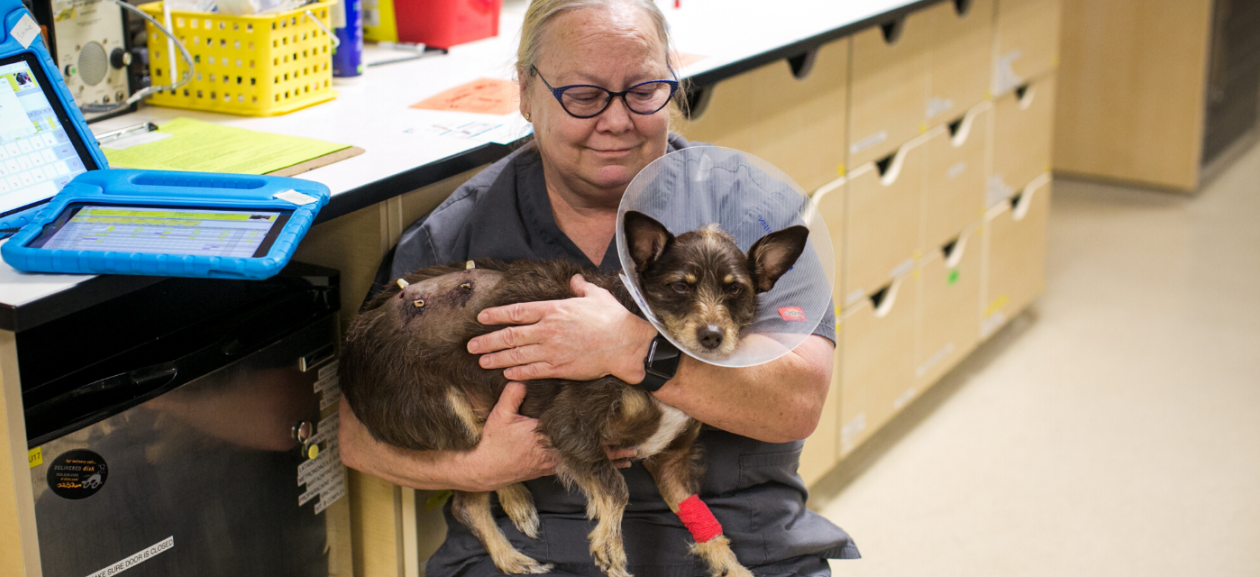
Dog Bite Prevention Tips
No matter the size or breed, any dog can bite. It doesn’t mean they’re “bad”—it just means they’re animals responding to their surroundings. Even the most gentle pets can bite if they feel scared, provoked, or in pain. The good news? Most bites are preventable, and there’s a lot we can do at home to help keep everyone safe.
Why Do Dogs Bite?
Most bites aren’t random—they’re a reaction. A dog might bite because they feel:
- Threatened by a person, another animal, or a situation
- Startled, especially when woken up or approached suddenly
- Protective over food, toys, space, or even their favorite person
- Unwell or in pain, which can make them more irritable or defensive
Some dogs also use their mouths during play. While it might seem cute at first, this behavior can escalate, especially around young children who may not know how to read the signs. Also, dogs are sensitive to change. Whether it’s a new baby, more foot traffic at home, or an altered routine, these shifts can be confusing and stressful, leading to behavior changes.
Preventing Dog Bites
- Stick with training. Positive reinforcement builds a foundation of trust between you and your dog. Reward calm and appropriate behavior, be consistent with rules, and give your dog clear guidance in new situations.
- Socialize wisely. Introduce your dog to new environments, people, and pets gradually. Keep interactions positive and controlled, and use a leash in public spaces.
- Take things slow at home. Common sounds like vacuum cleaners, skateboards, or doorbells can trigger fear. Use treats and praise to help your dog associate these sounds with something positive. Patience and repetition are key.
- Know your dog’s limits. Learning to read your dog’s body language can help you prevent an issue before it happens. If your dog is showing signs of stress or discomfort, give them space or remove them from the situation.
- Take extra care with young children. Always supervise children when around dogs.
Watch for warning signs:
- Growling, snapping, or lunging
- Stiff or frozen posture
- Avoiding eye contact or showing the whites of their eyes (“whale eye”)
- Ears pinned back or tail held stiff
- Tight or curled lips, especially just before a growl
If you already know your dog has fear-based or reactive tendencies, be proactive—avoid overwhelming environments and keep interactions safe and structured. And always stay current on vaccinations, especially rabies.
What to Do If You’re Bitten by a Dog
It’s natural to feel shaken, but quick action matters:
- Get the dog owner’s information. Ask for their name, phone number, and proof of rabies vaccination. You may also want to verify the dog’s vaccination status with their veterinarian.
- Clean the wound immediately. Use soap and water, and let it run under clean water for a few minutes if possible.
- See a medical professional. Even if it seems minor, bites can lead to infection or complications. If it’s after hours, go to urgent care or the ER.
What to Do If Your Dog Bites Someone
Bites can happen in a split second, and it’s scary for everyone involved. It’s important to stay calm, take responsibility, and make sure the person and your dog are safe.
- Restrain and remove your dog. Get them away from the person and into a safe space like a crate, another room, or securely on leash.
- Check on the person. Encourage them to wash the bite with soap and water and offer help if needed.
- Recommend medical care. Even small bites can become infected or require further care.
- Call for help if needed. If the bite is serious or the person is in distress, call 911.
- Exchange information. Provide your name, contact info, and proof of your dog’s rabies vaccination.
- Follow local laws. Many areas require bites to be reported. Check with your local animal services or public health department.
- Talk to your vet. Your veterinarian can help assess any behavioral red flags and suggest next steps for training or managing stressors in your dog’s environment.
How Humans Should Interact Safely With a Dog
Around 4.5 million people are bitten by dogs each year, and children are most at risk. Teaching safe behavior is key:
- Always ask before petting. Never approach or touch an unfamiliar dog without the owner’s permission.
- Respect their space. Avoid petting dogs that are eating, sleeping, injured, or caring for puppies—they may be more defensive or easily startled.
- Be cautious around strays or unknown dogs. If there’s no owner around, keep your distance.
- Let the dog come to you. Turn your body sideways or crouch down—these are less intimidating postures. Let them sniff before you try to pet them.
- If you feel threatened, don’t scream or run. Stay still, avoid eye contact, and back away slowly once the dog seems less focused on you.
For more detailed information, including resources on dog behavior and bite prevention, visit the American Veterinary Medical Association (AVMA) website, which provides expert advice and tips on keeping both humans and pets safe.
Recent Posts
Marijuana Toxicity in Pets: What You Need to Know
As availability of marijuana increases in the Portland area since legalization, so have the number of marijuana toxicity cases treated at DoveLewis. Our doctors warn pet owners of the potential risks to their dogs and cats if marijuana is ingested in any form.
Dog Bite Prevention Tips
Now more than ever, people are venturing outside with their pets to get fresh air. This is increasing the possibility of interactions with other dogs that can lead to bites and injuries. DoveLewis is sharing tips to help prevent this from happening so animals and humans can stay safe.
How to Build a Pet First Aid Kit
Every pet owner should have a pet first aid kit handy in case of an emergency. If you need to put one together, we’ve got you covered!




